
The Musée d'Orsay is a museum in Paris, France, on the Left Bank of the Seine. It is housed in the former Gare d'Orsay, a Beaux-Arts railway station built between 1898 and 1900. The museum holds mainly French art dating from 1848 to 1914, including paintings, sculptures, furniture, and photography. It houses the largest collection of Impressionist and post-Impressionist masterpieces in the world, by painters including Monet, Manet, Degas, Renoir, Cézanne, Seurat, Sisley, Gauguin, and Van Gogh. Many of these works were held at the Galerie nationale du Jeu de Paume prior to the museum's opening in 1986. It is one of the largest art museums in Europe. Musée d'Orsay had more than 3.6 million visitors in 2019.

Henri Fantin-Latour was a French painter and lithographer best known for his flower paintings and group portraits of Parisian artists and writers.

The 7th arrondissement of Paris is one of the 20 arrondissements of the capital city of France. In spoken French, this arrondissement is referred to as septième.

The Gare d'Austerlitz, officially Paris-Austerlitz, is one of the six large Paris rail termini. The station is located on the left bank of the Seine in the southeastern part of the city, in the 13th arrondissement. It is the start of the Paris–Bordeaux railway; the line to Toulouse is connected to this line. In 1997, the Ministry of Culture designated the Gare d'Austerlitz a historical monument; it became the fifth large railway station in Paris to receive such a label, as currently only Montparnasse has not been attributed it.
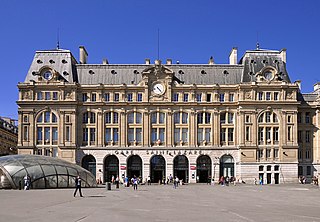
The Gare Saint-Lazare, officially Paris-Saint-Lazare, is one of the six large mainline railway station termini in Paris, France. It serves train services toward Normandy, northwest of Paris, along the Paris–Le Havre railway. Saint-Lazare is the second busiest station in Paris, after the Gare du Nord. It handles 275,000 passengers each day. The station was designed by architect Juste Lisch; the maître de l'œuvre was Eugène Flachat.
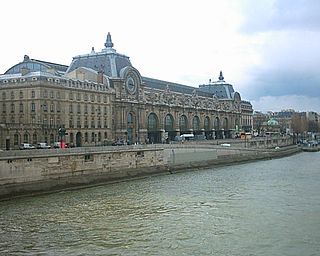
Gare d'Orsay is a former Paris railway station and hotel, built in 1900 to designs by Victor Laloux, Lucien Magne and Émile Bénard; it served as a terminus for the Chemin de Fer de Paris à Orléans. It was the first electrified urban terminal station in the world, opened 28 May 1900, in time for the 1900 Exposition Universelle. After closure as a station, it reopened in December 1986 as the Musée d'Orsay, an art museum. The museum is currently served by the RER station of the same name.
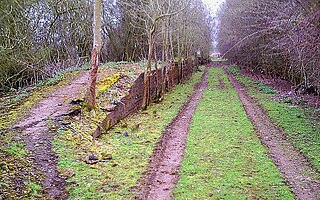
An abandoned railway station is a building or structure which was constructed to serve as a railway station but has fallen into disuse. There are various circumstances when this may occur – a railway company may fall bankrupt, or the station may be closed due to the failure of economic activity such as insufficient passenger numbers, operational reasons such as the diversion or replacement of the line. In some instances, the railway line may continue in operation while the station is closed. Additionally, stations may sometimes be resited along the route of the line to new premises – examples of this include opening a replacement station nearer to the centre of population, or building a larger station on a less restricted site to cope with high passenger numbers.
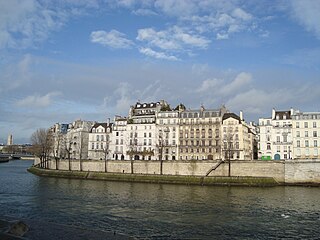
The Quai d'Orsay is a quay in the 7th arrondissement of Paris, part of the left bank of the Seine, and the name of the street along it. The Quai becomes the Quai Anatole-France east of the Palais Bourbon, and the Quai Branly west of the Pont de l'Alma.

Musée d'Orsay is a station in line C of the Paris Region's Réseau express régional (RER) rapid transit system, named after the Musée d'Orsay. It is in the 7th arrondissement of Paris. It was one of several stations attacked during the 1995 Paris Métro and RER bombings. Its precursor the Gare d'Orsay was the world's first electrified train station.

The RER C is one of the five lines in the RER system serving Paris, France. It is operated by SNCF.

Babar's Museum of Art was the collaborative product of Laurent de Brunhoff (illustrations) and his wife Phyllis Rose de Brunhoff (text) for the Babar the Elephant series. The aim was to introduce different notable works of art found in museums around the world, mostly paintings, but also including sculptures. The human subjects in these artworks were re-interpreted as elephants.

Tourism in Paris is a major income source. In 2018, 17.95 million international, overnighting tourists visited the city, mainly for sightseeing and shopping. Top sights include Notre Dame, Disneyland Paris (11), Sacre Cœur (10), the Versailles Palace (7.7), the Louvre Museum (6.9), the Eiffel Tower (5.9), Centre Pompidou (3.33), and the Musée d'Orsay. The largest numbers of foreign tourists who come to the Paris region are British, American, German, Italian, Chinese, and Canadian.

Hercules the Archer is a sculpture by Antoine Bourdelle, originally made in 1909, which now exists in many versions. It was a commission of the financier and philanthropist Gabriel Thomas, as a single copy in gilt-bronze in April 1909; Bourdelle worked on the sculpture in the summer of 1909. It was cast by Eugène Rudier, and it was exhibited at the National Society of Fine Arts in 1910, and much appreciated. The dimensions were 2.50 m × 2.40 m.

The Laundress is an oil-on-panel painted by French artist Honoré Daumier in 1863. It is currently held and exhibited at the Musée d'Orsay in Paris.

The SNCF BB 1280 class were a class of 600 V DC 4 axle Bo′Bo′ electric locomotives, formerly Compagnie du chemin de fer de Paris à Orléans machines, initially built for an underground section of line connecting the Gare d'Austerlitz to the Quai d'Orsay in inner Paris. The locomotives were converted for 1500 V DC use in the 1930s, and renumbered PO E.281 to E.293. They were absorbed by the SNCF, and operated as shunters until the late 1960s.
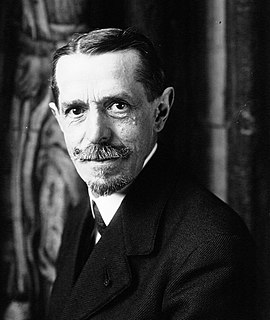
Marcel-André Baschet was a French portrait painter, notable for his numerous portraits of the Presidents of the French Third Republic.

The Quai Saint-Michel and Notre-Dame is a 1901 oil on canvas painting by the French artist Maximilien Luce. Luce was part of the Neo-Impressionist movement between 1887 and 1897 and used the technique of employing separate dabs of color (divisionism), for the painting, which was one of ten he undertook of Notre Dame de Paris. The Musée d'Orsay in Paris, which holds the image as of 2015, notes that this was painted by Luce when he was moving from his Neo-Impressionist period to his later Populist period. The Musée d'Orsay obtained the picture in 1981.

Jean-Baptiste-Antoine Guillemet was a French renowned landscape painter and longtime Jury member of the Salon des Artistes Francais. He was one of the first 19th-century artists to paint modern life, and a pivotal figure in the transition from Realism to Impressionism.
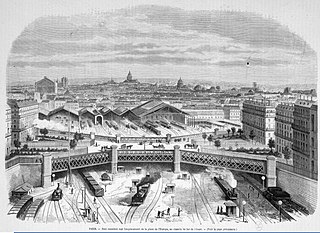
After working on rural landscapes, Claude Monet returned to Paris in 1877 and made a dozen oil paintings of the Gare Saint-Lazare railway station in Paris. This was Monet's first series of paintings concentrating on a single theme.

















